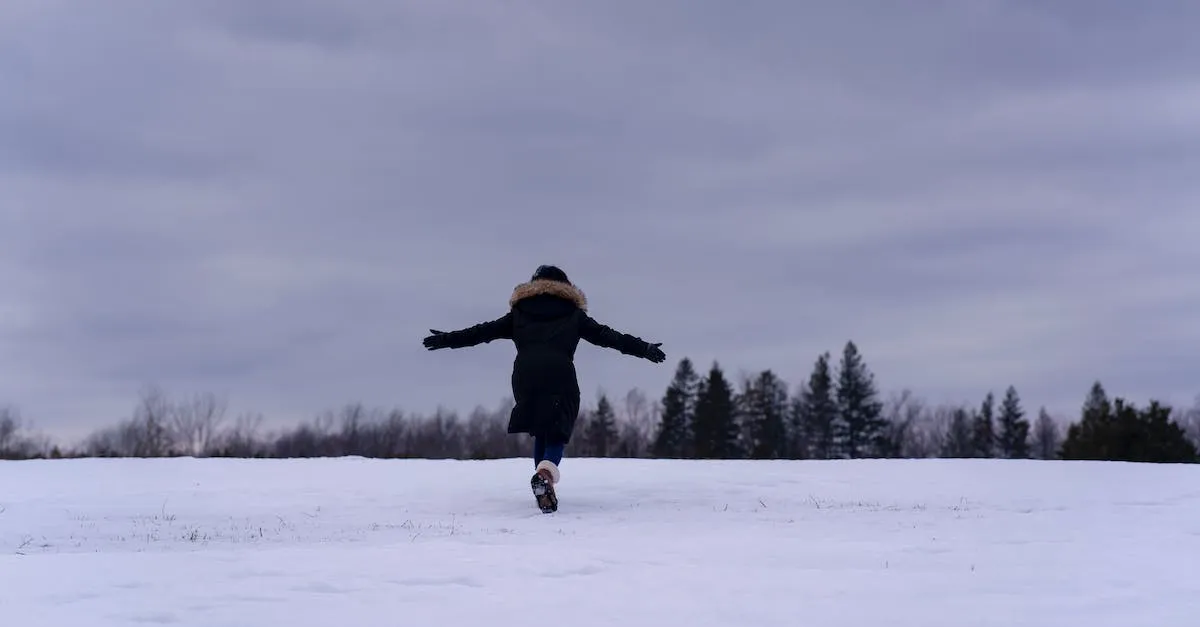Does It Get Cold In Texas?
With its reputation for blazing summer heatwaves, Texas may not seem like a place that experiences cold weather. But in fact, frigid temperatures and winter storms do occur across the Lone Star State.
If you’re short on time, here’s a quick answer to your question: Yes, it does get cold in Texas, especially in the northern and western parts of the state. Cold fronts can drop temperatures nearly statewide and winter storms can bring ice and snow.
In this approximately 3000 word article, we’ll explore the factors that lead to cold weather in different Texas regions. We’ll look at record low temperatures, historic winter storm events, and how the cold affects Texas infrastructure, agriculture, and daily life. We’ll also overview how Texans prepare for and respond to the cold each winter.
What Determines Texas Cold Spells
When it comes to cold weather in Texas, several factors come into play. From its continental climate to its northern latitude, Texas experiences occasional cold spells that can leave residents reaching for their winter coats. Let’s take a closer look at what determines these chilly temperatures.
Continental Climate
One of the main factors contributing to cold spells in Texas is its continental climate. Unlike coastal regions, which are moderated by the ocean, Texas is situated further inland, away from large bodies of water.
This means that the state is more susceptible to extreme temperature fluctuations, with hot summers and cold winters. So, while Texas is known for its warm weather, it can also experience some bone-chilling cold snaps.
Northern Latitude
Another factor that contributes to cold spells in Texas is its northern latitude. The northern part of the state lies closer to the colder regions of the United States, which means it is more likely to experience colder temperatures during the winter months.
In fact, cities like Amarillo and Lubbock, located in the Panhandle region, often see freezing temperatures and even snowfall during the winter season.
Cold Fronts and Freezes
Texas is also susceptible to cold fronts and freezes, which can bring sudden drops in temperature. Cold fronts occur when a mass of cold air moves into an area, displacing the warmer air. This can result in a rapid decrease in temperature, often accompanied by strong winds.
These cold fronts can bring freezing temperatures to areas of Texas that are not used to such cold weather. In some cases, these freezes can have a significant impact on agriculture and infrastructure.
Elevation Effects
Lastly, elevation plays a role in determining the cold spells in Texas. The state has a diverse topography, with mountainous regions in the west and flat plains in the east. Higher elevations, such as the Guadalupe Mountains or the Davis Mountains, tend to be colder due to their increased altitude.
These areas can experience colder temperatures and even snowfall during the winter months, while lower-lying regions may remain relatively mild.
Historic Cold Temperatures by Region
Rio Grande Valley
The Rio Grande Valley, located in the southernmost part of Texas, is known for its warm and sunny climate. However, there have been instances where the region has experienced unusually cold temperatures.
In January 1985, a severe cold wave swept through the area, bringing temperatures as low as 5 degrees Fahrenheit (-15 degrees Celsius). This historic cold snap caused significant damage to crops and infrastructure in the region.
Central Texas
Central Texas, which includes cities like Austin and San Antonio, generally experiences mild winters compared to other parts of the state. However, there have been occasional bouts of cold weather that have left residents reaching for their winter coats.
In February 2021, a rare winter storm hit the region, bringing freezing temperatures and snowfall. This event caused power outages, water shortages, and disrupted daily life for many Texans.
Dallas-Fort Worth
Dallas-Fort Worth, located in North Texas, is no stranger to cold weather. The region experiences a wide range of temperatures throughout the year, including freezing conditions during the winter months.
In fact, Dallas-Fort Worth has recorded temperatures as low as -8 degrees Fahrenheit (-22 degrees Celsius) in the past. During these extreme cold spells, residents are advised to take precautions to stay safe and protect their homes from freezing pipes.
Panhandle
The Panhandle region of Texas, which includes cities like Amarillo and Lubbock, is known for its harsh winters. The area is prone to strong winds and heavy snowfall during the colder months. In February 2013, a blizzard known as “Winter Storm Q” hit the Panhandle, bringing record-breaking snowfall and subzero temperatures.
This event caused travel disruptions and dangerous road conditions.
Trans Pecos
The Trans Pecos region, located in the western part of Texas, is characterized by its desert climate. While the area generally experiences mild winters, there have been instances of cold weather impacting the region.
In December 1983, a powerful cold front swept through West Texas, bringing temperatures as low as 0 degrees Fahrenheit (-18 degrees Celsius) in some areas. This cold snap was particularly challenging for residents unaccustomed to such frigid conditions.
While Texas is known for its warm and sunny weather, it is important to remember that cold temperatures can and do occur in various parts of the state. It is always wise to stay informed about weather forecasts and be prepared for unexpected changes in temperature.
For more information about historic weather events in Texas, you can visit the National Weather Service website.
Notable Texas Cold Snaps and Winter Storms
December 1983
One of the most memorable cold snaps in Texas history occurred in December 1983. The state experienced record-breaking low temperatures, with some areas dropping below zero Fahrenheit. The cold blast brought heavy snowfall and caused widespread power outages, leaving many Texans without electricity for days.
The severe weather conditions led to school closures, canceled flights, and hazardous road conditions. It was a challenging time for residents, but Texans showcased their resilience and came together to support one another.
February 1895
Another significant winter event in Texas history took place in February 1895. During this time, a powerful cold front swept across the state, bringing frigid temperatures and heavy snowfall. The winter storm had a profound impact on agricultural practices, damaging crops and causing livestock losses.
Texans had to adapt to the harsh conditions and find ways to protect their livelihoods. The February 1895 winter storm serves as a reminder of the unpredictable nature of Texas weather and the importance of preparedness.
1989-1999 Winters
The winters between 1989 and 1999 brought several cold snaps and winter storms to Texas. These years saw multiple instances of freezing temperatures, ice storms, and snowfall across the state. The winter of 1989, in particular, stands out as one of the coldest on record.
The prolonged cold spell caused significant disruptions, including school closures, transportation issues, and damage to infrastructure. It served as a reminder that Texas, despite its reputation for warm weather, is not immune to extreme winter conditions.
February 2021 Winter Storm
The most recent notable winter event in Texas occurred in February 2021. A winter storm swept across the state, bringing freezing temperatures and widespread snowfall. The extreme weather conditions caused power outages for millions of Texans, leading to a state of emergency.
The impact of the winter storm was felt across various sectors, including transportation, healthcare, and agriculture. It served as a wake-up call for the state to improve its infrastructure and preparedness for future winter events.
For more information on Texas weather and historical winter storms, you can visit the National Weather Service website.
Impacts of Cold and Winter Weather
Agriculture and Livestock
When cold weather hits Texas, it can have a significant impact on the state’s agriculture and livestock industry. Frost and freezing temperatures can damage crops and halt their growth, leading to potential financial losses for farmers.
Livestock, such as cattle, may also be affected by the cold, requiring additional care and shelter to keep them healthy and safe. In extreme cases, severe winter weather can even result in the loss of livestock, impacting the livelihoods of farmers and ranchers.
Infrastructure and Power Grid
Cold weather can put a strain on the infrastructure and power grid in Texas. Freezing temperatures can cause pipes to burst, leading to water damage and potential disruptions in water supply. Additionally, the demand for electricity often increases during cold spells as people rely on heating systems to stay warm.
This increased demand can put stress on the power grid, leading to power outages if the system is not adequately prepared. The Texas power grid has faced challenges in the past during extreme winter weather events, highlighting the need for proper infrastructure and planning.
Transportation
Winter weather conditions, such as ice and snow, can make traveling in Texas challenging and even dangerous. Roads may become slippery, increasing the risk of accidents. In some cases, severe winter weather can lead to road closures, disrupting transportation networks and causing delays for both commuters and freight transportation.
It is important for drivers to exercise caution and be prepared when traveling during winter weather conditions to ensure their safety and the safety of others on the road.
School and Work Closures
Extreme cold and winter weather can also result in school and work closures in Texas. When temperatures drop to unsafe levels or road conditions become hazardous, schools may choose to close to protect students and staff.
Similarly, companies and businesses may close or allow employees to work from home to ensure their safety. These closures can have an impact on productivity and daily routines but are necessary to prioritize the well-being of individuals.
Preparing for and Surviving the Cold
Contrary to popular belief, Texas does experience cold weather, especially during the winter months. While it may not be as extreme as some northern states, it is still important for Texans to be prepared for the chilly temperatures.
From winterizing homes to dressing in layers, here are some tips for surviving the cold in Texas.
Winterizing Homes
One of the first steps in preparing for the cold weather is to winterize your home. This involves making sure your home is properly insulated and sealed to prevent drafts. Adding weatherstripping to doors and windows, insulating attics and crawl spaces, and sealing any cracks or gaps can help keep the cold air out and the warm air in.
It is also a good idea to have your heating system inspected and serviced before the cold weather arrives to ensure it is in good working condition.
Dressing in Layers
When venturing out into the cold, dressing in layers is essential. Layering allows you to adjust your clothing to the changing temperatures throughout the day. Start with a moisture-wicking base layer to keep sweat away from your body, add a warm middle layer made of materials like fleece or wool, and top it off with a waterproof and windproof outer layer.
Don’t forget to wear a hat, gloves, and warm socks to protect your extremities from the cold. And remember, just because it’s Texas doesn’t mean you can’t rock a stylish winter coat!
Travel Precautions
During cold weather, it is important to take extra precautions when traveling. Check the weather forecast before heading out and plan your route accordingly. If there is a possibility of icy or snowy conditions, allow for extra travel time and drive at a slower speed.
It is also a good idea to keep an emergency kit in your car, including items such as blankets, a flashlight, extra batteries, water, and non-perishable snacks. And don’t forget to inform someone of your travel plans and estimated arrival time.
Keeping Pipes from Freezing
Freezing pipes can be a major issue during cold weather. To prevent this, insulate exposed pipes with foam insulation sleeves or wrap them in heat tape. It is also important to keep the heat on in your home, even if you are away, to ensure that the pipes don’t freeze.
If you do experience frozen pipes, it is best to contact a professional plumber to thaw them out to avoid any potential damage.
By following these tips and taking the necessary precautions, you can stay warm and safe during the cold weather in Texas. Remember, even though it may not get as cold as some other states, it’s always better to be prepared!
Conclusion
While Texas is known for its hot climate, many underestimate how truly cold it can get, especially when frigid air comes sweeping down from the north. From the ice storms of Dallas to blizzards in Amarillo, Texans periodically have to brace against below-freezing temperatures and winter precipitation.
Dealing with the cold is simply a way of life for Texans in the winter. They tap their frontier spirit to handle whatever Mother Nature throws at them. The cold may disrupt routines and infrastructure temporarily, but Texans don their parkas and sweaters, crank up the heat, and press on.








